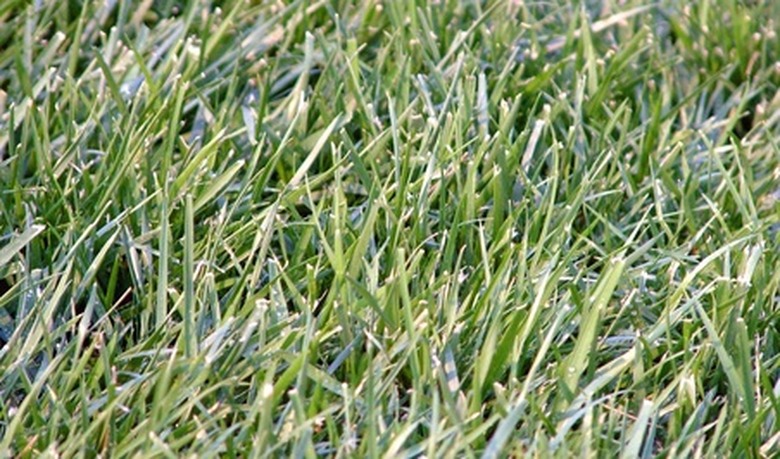How To Prepare Bermuda Grass For The Winter
Bermuda grass is a warm-season grass that goes dormant in the winter. It looks brown or yellow and can be unattractive, especially if you don't have a winter cover grass. Bermuda grass is popular for its quick-spreading and lush, hardy blades, but it also can spread into flowerbeds or gardens. Control Bermuda grass with proper maintenance throughout the year, and help it ease into the transition of winter dormancy with good care. It is a perennial grass, so it should come back in the spring without much activity on your part.
Step 1
Stop watering the grass in mid-October, at the latest, to help it go dormant. In cooler climates, September may be cold enough to start the dormancy process.
- Bermuda grass is a warm-season grass that goes dormant in the winter.
- Control Bermuda grass with proper maintenance throughout the year, and help it ease into the transition of winter dormancy with good care.
Step 2
Wait for the Bermuda grass to turn a brown or yellow color, which is an indication the grass is entering its dormant state. Don't mow it until this happens consistently across the yard, which may mean breaking out the lawnmower once more after the first killing frost.
Step 3
Mow the Bermuda grass down to 1 inch to keep it neat throughout the winter and help it start off growing densely in the spring. Rake up grass clippings and fallen leaves so they don't decompose on the grass and stifle or rot patches of it during the winter, especially if you have rainy winters.
Step 4
Don't water, fertilize or take any steps that might encourage growth. Prepare for new spring growth with an application of a nitrogen fertilizer. Follow the label instructions for dosage.
- Wait for the Bermuda grass to turn a brown or yellow color, which is an indication the grass is entering its dormant state.
- Don't mow it until this happens consistently across the yard, which may mean breaking out the lawnmower once more after the first killing frost.
Prepare Bermuda Grass For The Winter?
During its growing period, Bermuda grass lawns should be mowed to 1 or 1 1/2 inches high. Cutting it lower than this may increase its susceptibility to cold weather injury. If you typically use slow-release fertilizer on your Bermuda grass lawn, make the final application in July. Nitrogen encourages Bermuda grass growth and tender new shoots can be injured in an unexpected early cold snap. Spring is seed-setting time for these weeds so taking care of them when they emerge in fall prevents a larger infestation next season. Spot-spraying is easiest and more environmentally friendly. Don't mow the lawn for two days before applying weed killer and water the lawn before treating it. Use a pre-mixed selective product containing 2,4-D — dimethylamine salt of 2-methyl-4-chlorophenoxyacetic acid. If you want winter color in your Bermuda grass lawn, you'll need to overseed with a cool-season grass seed, typically perennial rye grass (Lolium perrene), which grows in USDA zones 2 through 10.
- During its growing period, Bermuda grass lawns should be mowed to 1 or 1 1/2 inches high.
- If you typically use slow-release fertilizer on your Bermuda grass lawn, make the final application in July.
Things Needed
- Lawnmower
- Sprinkler
- Nitrogen fertilizer
- Rake
Tip
It takes average temperatures in the 50s F to trigger Bermuda grass dormancy, and a period of consistent nighttime temperatures in the 30s.
References
- Phoenix Tropicals: Bermuda Grass Life Cycle
- Texas A&M University Horticulture: Bermuda Grass
- United States Department of Agriculture: Agrostis Stolonifera L.
- Mississippi State University Extension Service: The Right Grass — Warm-Season
- University of California Cooperative Extension: California Turfgrass Culture
- WalterReeves.com: Bermuda -– Mowing
- High Plains/Midwest Ag Journal: Preparing Bermudagrass for Winter
- University of California Statewide Integrated Pest Management Program: Planting and Management Tips for Bermudagrass
- Prairie and Wetland Center: Agrostis Stolonifera
- Seedland: Climate Maps, Grass Type Chart & More
- California Invasive Plant Council: Cynodon Dactylon (Bermudagrass)
